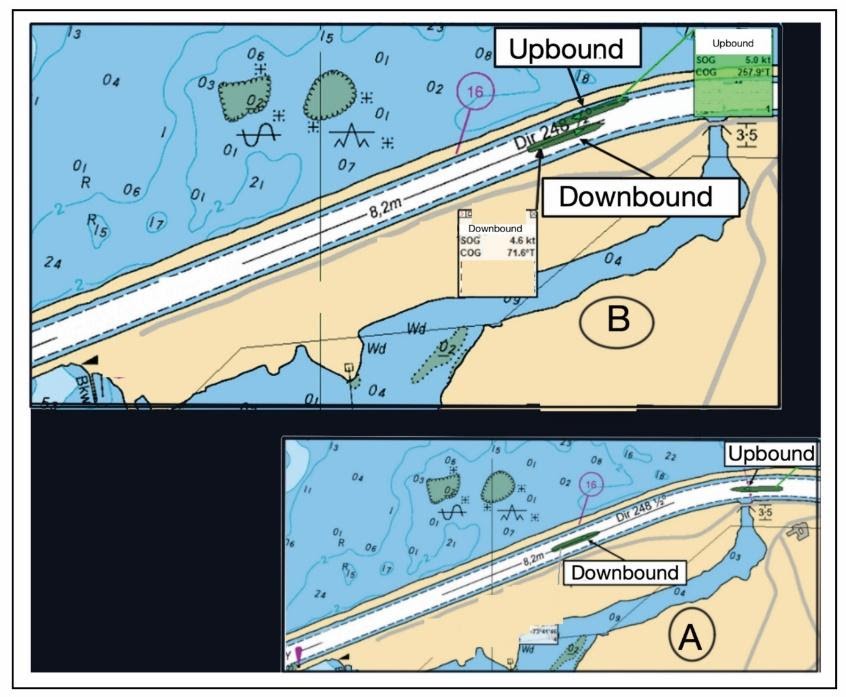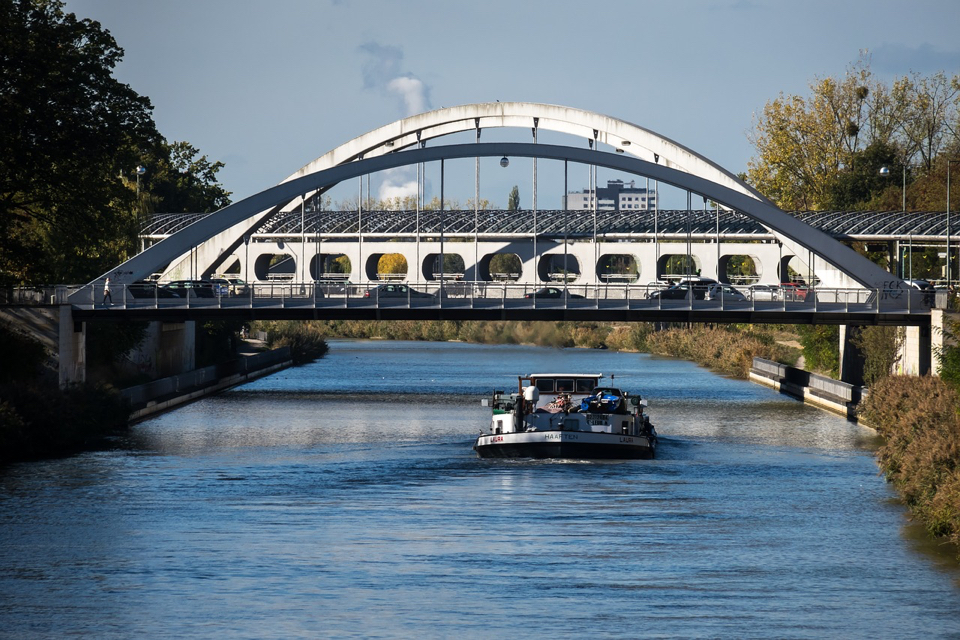When two ships tried to steer clear of each other near a curve in a narrow channel, one of them made bottom contact. The Nautical Institute discusses this incident in a recent Mars Report and argues that ‘a successful meeting relies on bow pressure waves and hydrodynamics to keep the vessels apart.’
The Nautical Institute gathers reports of maritime accidents and near-misses. It then publishes these so-called Mars Reports (anonymously) to prevent other accidents from happening. A summary of this incident:
The bridge teams of two vessels, one down-bound and one up-bound in a narrow channel, had agreed to meet just upstream from a curve. Sometime later, while rounding the curve, the up-bound vessel proceeded close to the north bank and then deviated towards the centre of the canal, as in diagram A. To correct the deviation, the bridge team altered course to starboard.
Meanwhile, the down-bound vessel was approaching the curve at a speed of 4.9 knots with the current astern at about 1 knot. The vessel was positioned close to the centre-line of the channel and the master made a VHF call to the up-bound vessel requesting more room. The
up-bound bridge team did not acknowledge the call.
As the two vessels came abeam each other, as in diagram B, the up-bound vessel was slowly changing course to port, towards the centre of the channel. The down-bound vessel was still positioned close to the channel center-line and maintaining its course.
While manoeuvring, the up-bound vessel’s starboard quarter came within approximately 7 metres of the north bank of the channel and made bottom contact.
Advice from The Nautical Institute
- Meeting in very narrow channels takes special procedures whereby each vessel is on a steady course and almost pointed at the other. A successful meeting relies on bow pressure waves and hydrodynamics to keep the vessels apart.
- While it was mutually agreed to meet above the curve, the actual location of the meeting was arguably too close to the curve to give the up-bound vessel enough time to stabilise in a correct meeting posture.
- Once the stern of a vessel becomes close to a bank, hydrodynamic suction (bank suction) will bring the stern even closer and make bottom contact hard to avoid.

The actual location of the meeting was arguably too close to the curve to give the up-bound vessel enough time to stabilize in a correct meeting posture.
Mars Reports
This accident was covered in the Mars Reports, originally published as Mars 202057, that are part of Report Number 336. A selection of this Report has also been published in SWZ|Maritime’s November 2020 issue. The Nautical Institute compiles these reports to help prevent maritime accidents. That is why they are also published on SWZ|Maritime’s website.
More reports are needed to keep the scheme interesting and informative. All reports are read only by the Mars coordinator and are treated in the strictest confidence. To submit a report, please use the Mars report form.








